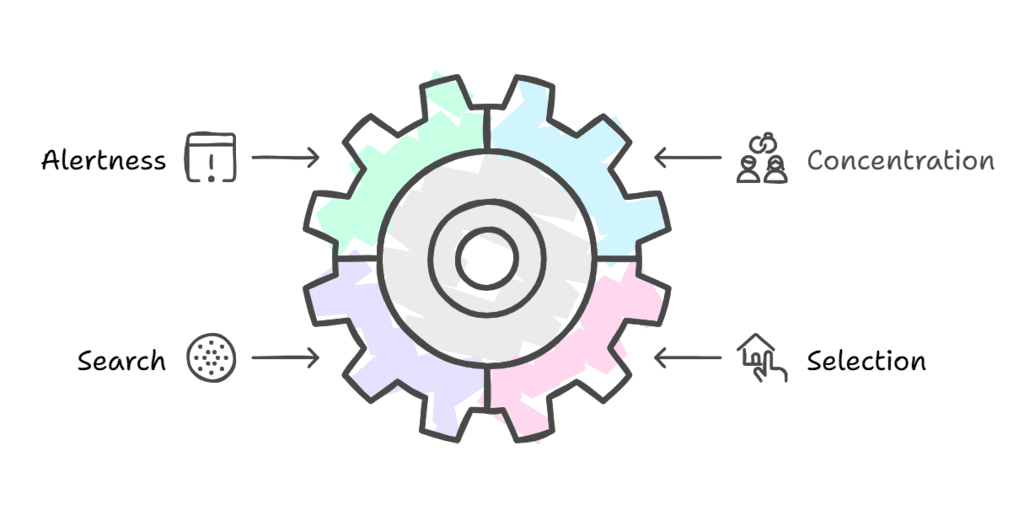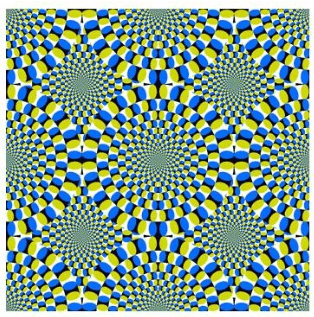NCERT Solutions for Class 11 Psychology - Sensory, Attentional and Perceptual Processes
Q1: Explain the functional limitations of sense organs.
Ans: The functional limitations of human sense organs refer to their restricted ability to perceive stimuli. Key points include:
- A stimulus must have an optimal intensity to be detected.
- For example, our ears struggle to hear very faint or loud sounds.
- Similarly, our eyes cannot see in very dim or bright light.
- Each sense organ is specialised for specific stimuli, known as sense modalities.
Additionally, the minimum intensity required to notice a stimulus is called the absolute threshold. For instance:
- Adding a granule of sugar to water may not make it taste sweet.
- However, after adding enough granules, the sweetness becomes noticeable.
Overall, structural or functional issues in the sense organs or their neural pathways can lead to a loss of sensation.
Q2: Define attention. Explain its properties.
Ans: Attention refers to the process through which certain stimuli are selected from a group of others. It requires an allocation of effort. The objects that are at the centre are the focus of attention while objects that are away from the centre are at the fringe.
Attention has following properties:
- Alertness: It refers to the individual's readiness to deal with stimulus that they experience. For instance, the situations where people are alert while crossing the road in order to avoid mishaps.
- Concentration: It refers to the focus of awareness on specific objects while excluding others in that period of time. For instance, the executives in a meeting concentrate upon their work while ignoring other activities outside.
- Search: It takes place when an observer looks for specific subset of objects among a set of objects. For example, the historians search for sites to gain information about events within a particular time period.
- Selection: It refers to the focus of conscious awareness on a particular stimulus, upon which the attention is gained.

Attention can also be classified into different types:
- Selective Attention: Involves choosing a few stimuli from many.
- Sustained Attention: The ability to maintain focus over time.
- Divided Attention: Attending to multiple things simultaneously, often seen in well-practiced tasks.
Overall, attention is essential for processing information effectively, allowing us to navigate our environment and respond appropriately.
Q3: State the determinants of selective attention. How does selective attention differ from sustained attention?
Ans: The determinants of selective attention are following:
(i) The external factors: These are the features of stimuli such as size, intensity, shape etc.
(ii) The internal factors: These are present within the individual and can be divided into motivational factors and cognitive factors.
- Motivational factors represent our biological and social needs. Instances of the same are the drivers strictly following all the traffic rules.
- Cognitive factors represent interests, attitude and preparatory set. For instance, an average teenager would be more interested in watching a cricket match than reading a novel.
Selective attention differs from sustained attention as sustained attention is primarily concerned with concentration and refers to the ability to maintain attention on an object for even for long duration. Contrary to this, selective attention is related to the selection of a limited number of stimuli from a larger group of stimuli.
Q4: What is the main proposition of Gestalt psychologists with respect to perception of the visual field?
Ans: The main proposition of Gestalt psychologists regarding the perception of the visual field is that:
- Humans perceive different stimuli as an organised whole, rather than as separate parts.
- The form of an object is found in its entirety, which is distinct from the sum of its individual parts.
- For instance, a flower pot with flowers is seen as a complete object, while removing the flowers changes its configuration but not its status as a whole.
- Gestalt psychologists assert that our brain is oriented towards perceiving a good figure, known as pragnanz.
Q5: How does perception of space take place?
Ans: We perceive space in three dimensions due to our ability to convert two-dimensional images from our retina into a three-dimensional understanding. Key factors influencing this perception include:
- Spatial attributes: Size, shape, and direction of objects.
- Distance: The space between objects also affects how we perceive them.
Although the images on our retina are flat, our brain processes them to create a sense of depth. This ability is known as depth perception, which is crucial in everyday activities, such as:
- Estimating the distance of moving vehicles while driving.
- Determining how loudly to call someone based on their distance.
Depth perception relies on two main types of cues:
- Binocular cues: Require both eyes.
- Monocular cues: Can be perceived with just one eye.
These cues help us interpret our surroundings accurately, allowing us to navigate and interact with the world effectively.
Q6: What are the monocular cues of depth perception? Explain the role of binocular cues in the perception of depth?
Ans: The monocular cues of depth perception allow us to perceive depth using just one eye. These cues are often referred to as pictorial cues because artists use them to create the illusion of depth in two-dimensional artworks. Key monocular cues include:
- Relative Size: Objects that are closer appear larger, while those that are further away look smaller.
- Interposition: When one object overlaps another, the overlapped object is perceived as being further away.
- Linear Perspective: Parallel lines appear to converge in the distance, creating a sense of depth.
- Aerial Perspective: Distant objects appear hazier and less detailed than those that are closer.
- Light and Shade: The way light falls on objects helps us judge their shape and distance.
- Texture Gradient: The texture of surfaces appears finer as they recede into the distance.
- Motion Parallax: When we move, closer objects appear to move faster than those further away.
The binocular cues of depth perception are provided by both the eyes in three dimensional spaces. Their role in the perception of depth are as follows:
- Retinal or Binocular disparity: It occurs when the two eyes have different locations in the head and are separated horizontally with a difference of 6.5 centimetres. The difference in the images formed by the eyes is due to retinal disparity. Large retinal disparity means a close object and small retinal disparity means a distant object.
- Convergence: When the eyes converge inward to bring the image on the fovea of each eye, a group of muscles send messages to the brain which are interpreted as cues to the perception of depth. The degree of convergence decreases with increase in distance of the object.
- Accommodation: It is the process through which image is focussed on the retina with the help of ciliary muscle. These muscles change the thickness of the eye lens. The degree of contraction of the muscles provides a cue to distance. The muscles relax when the object is distant and contract when the object is near.
Q7: Why do illusions occur?
Ans: Illusions occur because of a result of a mismatch between the physical stimuli and its perception by the individual. The mismatch is caused by incorrect interpretation of information received by sensory organs. Key points include:
- Illusions are often referred to as primitive organisations because they are generated by external stimuli that create similar experiences for everyone.
- Some illusions are universal, meaning they are experienced by all individuals regardless of background.
- Universal illusions remain consistent and do not change with experience or practice.
- In contrast, personal illusions vary from person to person and can be influenced by individual experiences.

Q8: How do socio-cultural factors influence our perceptions?
Ans: Socio-cultural factors significantly shape our perceptions through various mechanisms:
- Different cultural backgrounds lead to differential familiarity with stimuli.
- People develop unique habits of perception based on their environments.
For instance:
- A study showed that Africans are more prone to the horizontal-vertical illusion due to their experiences in dense forests, where verticality is common.
- Conversely, Europeans are more susceptible to the Muller-Lyer illusion, as their surroundings are filled with right angles, leading them to underestimate certain line lengths.
Additionally, cultural settings affect how individuals interpret images:
- People from pictureless environments may struggle to recognise objects in pictures.
- For example, Hudson's research found that some African participants had difficulty identifying depicted objects and judging distances in images.
- In contrast, Eskimos can distinguish between various types of snow, which others might overlook.
These findings highlight that our perceptions are not universal; they are shaped by personal, social, and cultural conditions.
FAQs on NCERT Solutions for Class 11 Psychology - Sensory, Attentional and Perceptual Processes
| 1. What are sensory processes and how do they influence perception? |  |
| 2. How does attention affect our perceptual processes? |  |
| 3. What are the different types of attentional processes? |  |
| 4. What is the relationship between perception and cognition? |  |
| 5. How do perceptual processes develop over time? |  |

















